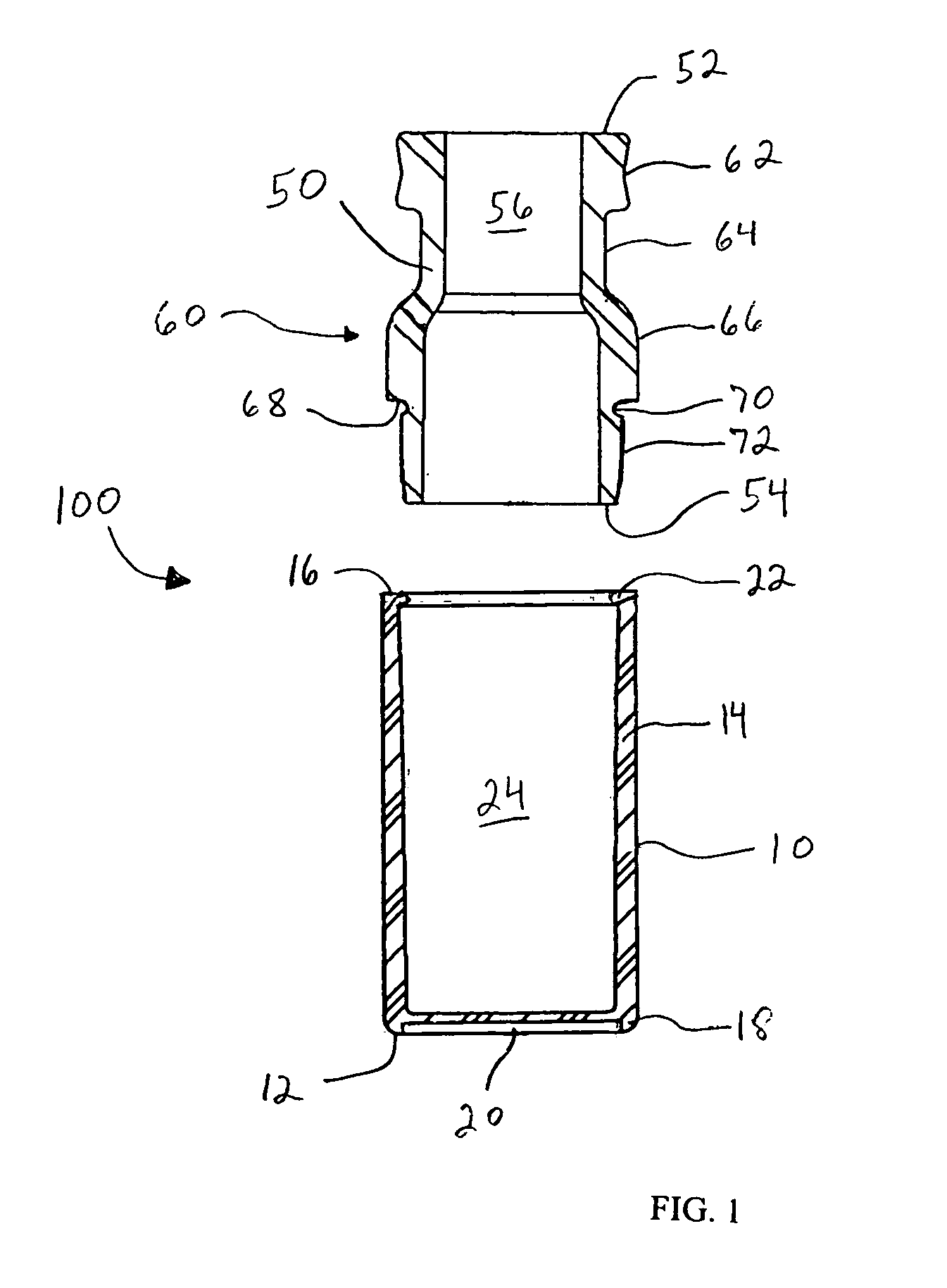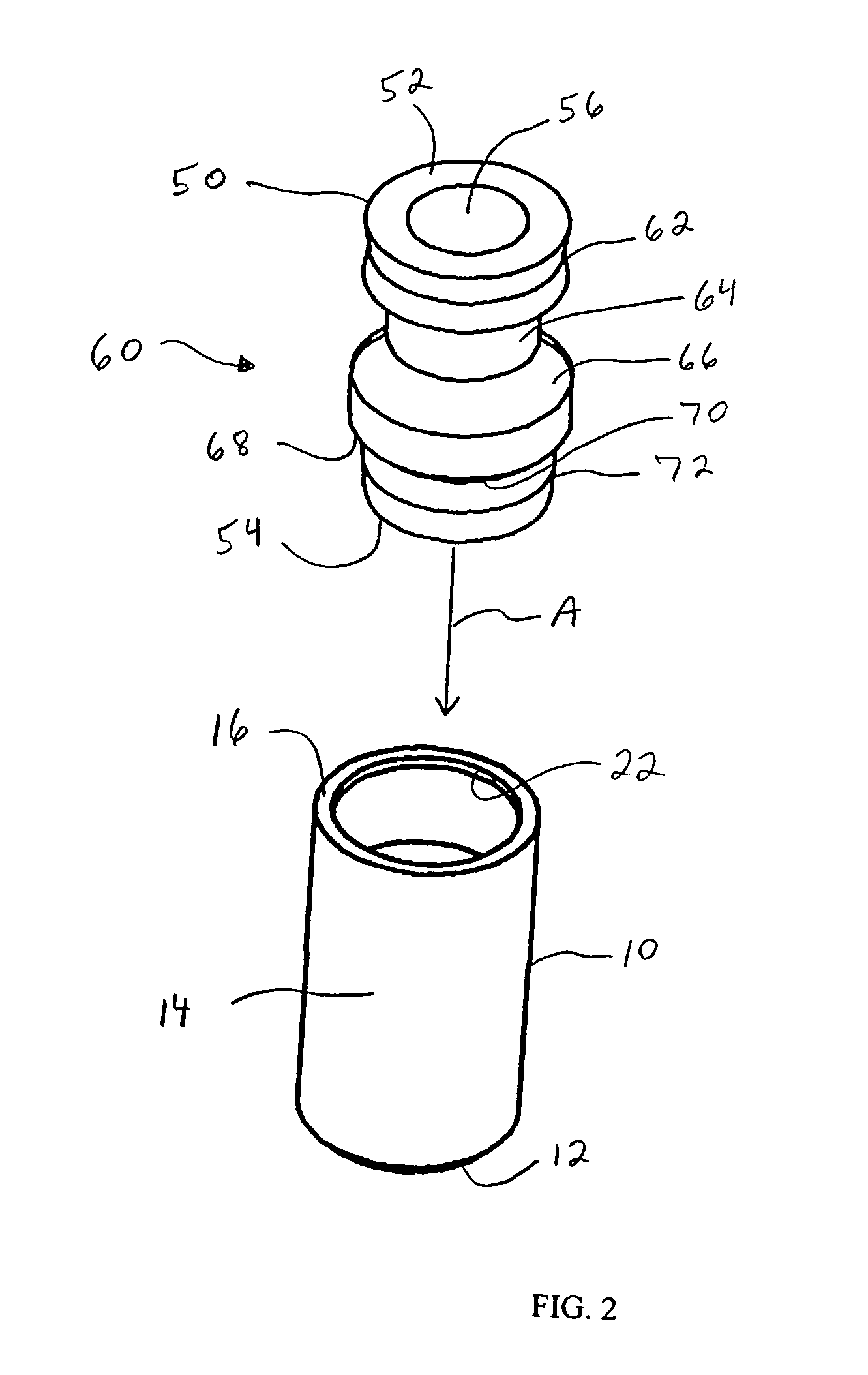Two-piece seal vial assembly
a sealing and vial technology, applied in the field of vials, can solve the problems of dangerous removal of aluminum crimping caps from vials, tight dimensional tolerance between caps and vial contact points, and design with more than one point of conta
- Summary
- Abstract
- Description
- Claims
- Application Information
AI Technical Summary
Problems solved by technology
Method used
Image
Examples
Embodiment Construction
[0039]Referring now to the drawing, in which like reference numbers refer to like elements throughout the various figures that comprise the drawing, FIG. 1 shows a cross-sectional view of a two piece seal vial assembly 100, according to an embodiment of the present invention, with the two components in an unassembled state. FIG. 2 is an isometric view of the assembly shown in FIG. 1. FIGS. 1 and 2 illustrate the two main components: a vial 10 and a seal top 50.
[0040]Generally, vials used in analytical chemistry assays are made of glass or plastic, among other suitable materials. Such materials include polypropylene, PTFE, polyethersulfone, polyvinylidene fluoride, and nylon. Nylon is a term coined by its inventors at E.I. duPont de Nemours & Co., Inc. Not a trademark, the term designates any of a family of high-strength, resilient, synthetic materials whose long-chain molecule contains the recurring amide group CONH. The official chemical name for nylon is polyhexamethyleneadipamide...
PUM
 Login to View More
Login to View More Abstract
Description
Claims
Application Information
 Login to View More
Login to View More - R&D
- Intellectual Property
- Life Sciences
- Materials
- Tech Scout
- Unparalleled Data Quality
- Higher Quality Content
- 60% Fewer Hallucinations
Browse by: Latest US Patents, China's latest patents, Technical Efficacy Thesaurus, Application Domain, Technology Topic, Popular Technical Reports.
© 2025 PatSnap. All rights reserved.Legal|Privacy policy|Modern Slavery Act Transparency Statement|Sitemap|About US| Contact US: help@patsnap.com



